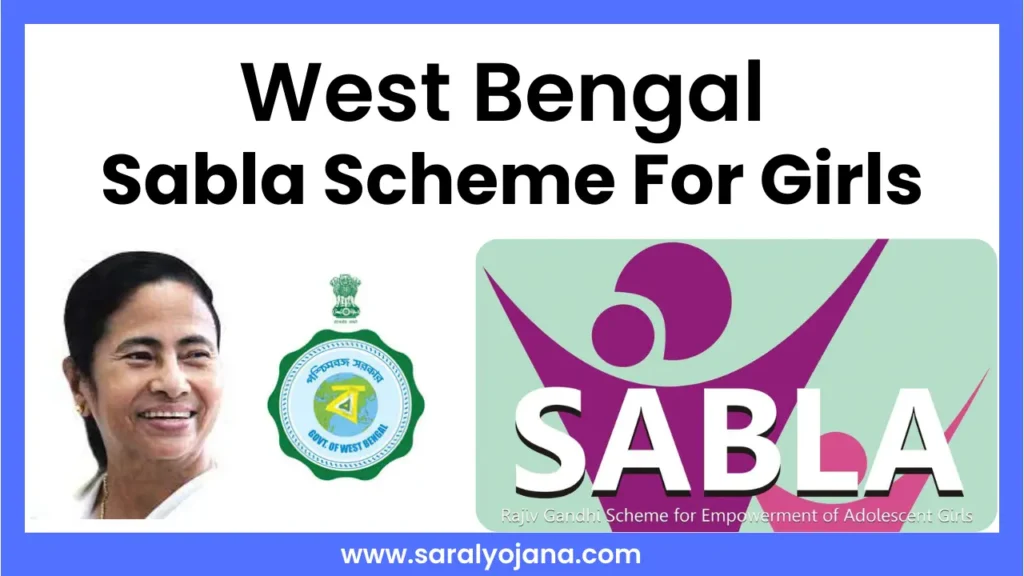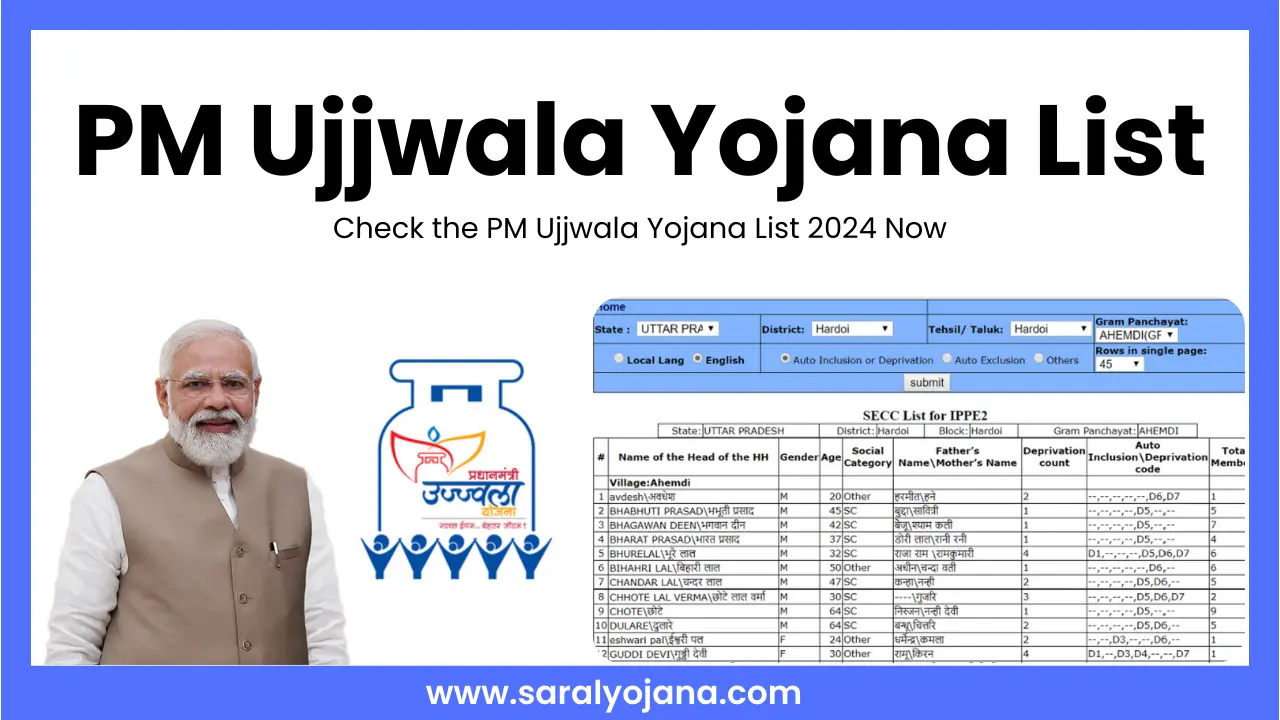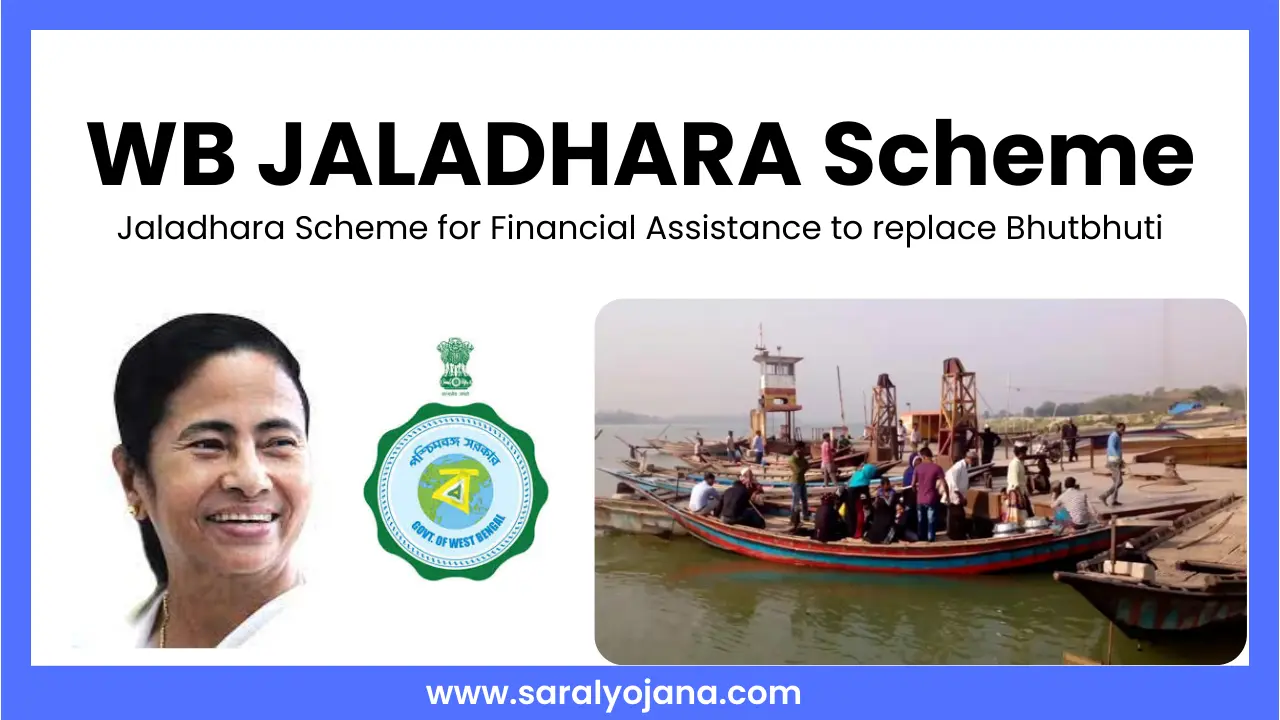SABLA Scheme 2024 | Rajiv Gandhi Scheme for Empowerment of Adolescent Girls | Objectives, Benefits, Online Registration & Application Process
With a focus on adolescent anaemia, the SABLA scheme aims to enhance the nutritional condition and general health of teenage girls in seven West Bengal districts. Additionally, the Scheme gives them vocational skill sets and life skills education, as well as pertinent knowledge, awareness, and information. Girls who are currently in school and receiving Kanyashree are eligible for the SABLA yojana. While the scheme encourages and supports girls who are not in school to go back.
| Name of the Scheme | West Bengal Sabala Scheme |
| Initiated By | West Benga CM Mamata Banerjee, 2011 |
| Department | West Bengal Department of Women Development & Social Welfare |
| Purpose | To improve the nutritional and health status of girls between 11 to 18 years of age in West Bengal. |
| Application Process | Offline |
| Official Website | http://wbcdwdsw.gov.in/ |
Adolescent females are the target audience for the Sabla Scheme, also known as the Rajiv Gandhi Scheme. This significant government program targets adolescent females between the ages of eleven and eighteen. The goal of the Sabla program is to empower adolescent girls (AGsz). In this article, we will tell you all the details regarding WB Sabla Yojana. So, read till the end.
Join our telegram group to get the latest updates regarding All Government Schemes and Yojana
West Bengal Sabla Scheme
The West Bengal State Government’s Sabala redevelopment scheme primarily aims to empower teenage girls. Stated differently, it is a scheme that works with girls’ complete growth. This scheme has implemented simultaneously in seven districts of West Bengal. Indeed, the state government of West Bengal is aiming to improve the mental and physical development of girls between the ages of 11 and 18 through this scheme.
On the other hand, the Scheme has given teenage girls instruction to help them become adept in a variety of areas. It is accomplished by teaching people life skills, maintaining good health, and managing diet. This Scheme also raises issues related to hygiene, health, and sexual health.

Numerous Anganwari organizations across the state carry out the Scheme’s general functions. The Women and Child Welfare Department and West Bengal’s Social Welfare Department are the primary branches in charge of overseeing the Scheme. One of the Sabala Schemes’ goals is to ensure that women are not discriminated against due to societal or other factors.
Purpose of the Scheme
This system has a wide range of goals, all of which are directly related to the well-being and development of women. The foremost goal of the Sabala Scheme is to empower women. In other words, the state government has been implementing this Scheme to ensure that women do not fall behind in this patriarchal society.
Also, the goal of this Scheme is to ensure that women have the right to excellent health. In truth, women in certain parts of West Bengal continue to be neglected, and they nearly never have access to the same healthful foods as males. But there’s another reason: poverty.
As a result, the goal of all of the Schemes is to ensure that women are not malnourished owing to poverty or other factors. Furthermore, the objective of this Scheme is to raise awareness among women. The Sabala Scheme aims to raise women’s health and sexual knowledge beginning in youth. Overall, the goal of this scheme is to remove inequality in society.
Benefits
- Empowering young females to have more productive lives.
- Focusing on overall well-being by addressing nutrition and non-nutrition needs
- Promoting skill development to help teenage girls self-sufficient.
- Upgrading their existing skills and partnering with the National Skill Development Programme.
- Taking advantage of Anganwadis, schools, and panchayat structures to reach every vulnerable girl
- Promoting Adolescent Reproductive and Sexual Health (ARSH), counselling, and child care practices among girls.
- Bringing out-of-school girls into the educational system.
Eligibility Criteria for Applying the Scheme
You must review all the qualifying requirements of the scheme before applying.
- The girl must be a permanent resident of West Bengal.
- The girl’s age must follow the below criteria.
- The age of 11 to 14 years
- The age 15 to 18 years
- The adolescent female needs to be single. No married girl is eligible for the scheme.
- The girl has to be enrolled in classes. Teenage girls who are not studying in any school are ineligible for this scheme.
Required Documents
- Age Proof
- Aadhar Card
- Qualification Proof
- Passport size Photo
How to Apply for the West Bengal Sabla Scheme?
Those who wish to benefit from this initiative now need to apply for the West Bengal Sabla Scheme in the following way.
- The AGs should visit the Anganwadi Centre/Anganwadi Medical Officer/Ministry of Labour, depending on the services provided to the beneficiaries.
- Now, collect the application form from the appropriate office and fill it out carefully in the approved format.
- After that, submit the form and the authority will send it for verification.
- To evaluate the initiative’s effect and implement any corrections, periodic scheme verification would be conducted. The States and UTs will also conduct evaluations regularly.
- For the final evaluation to subsequently reflect the outcomes, the States and UTs will also conduct baseline surveys and situational analyses to identify beneficiaries.
- With funding from Sakhi/Saheli, the AWW will maintain the Register at the AWC, which will be opened annually.
- The CDPO will compile project-specific physical and financial progress reports and records on a quarterly or annual basis in the designated forms. It will forwarded to the State Government, which will forward them to the Ministry on behalf of the Governments or UTs.
- Next, the supervisor will keep the correct AG records at the AWC, and collate and report according to the guidelines.
Services under the WB Sabla Scheme
SABLA Scheme implementation is carried out through the ICDS infrastructure. The Anganwadi Centers will serve as the main hubs for the provision of the program’s services. This program primarily targets teenage girls who are in school as well as those who are not. The following table summarizes the different program services provided to the girls.
Nutrition Component
It is a crucial part of the SABLA Plan. Depending on the situation, AGs may receive it through Hot Cooked Meals or Home Rations (THR). There are quality requirements to fulfil if hot meals are provided.
| Services under the SABLA Scheme | Details of the Services | Service Provider | Target Group |
| The nutritional provision at Rs.5 per day | Consumption of a maximum of 300 days a year, 600 calories and 18–20 grams of protein as a hot meal or take-home ration. | Anganwadi centres (AWCs) | Both the age group of 11 to 14 (Out-of-school) & 14 to 18 |
Non-nutrition Component
The target group of teenage girls for the SABLA scheme provides these services to fully cover some aspects of the scheme, such as life education and the ARSH scheme.
| Services under the SABLA Scheme | Details of the Services | Service Provider | Target Group |
| Iron Folic Acid (IFA) Supplementation | Every AG in the Anganwadi centres would receive two Iron Folic Acid (IFA) tablets each week. | Counselling on Family Welfare Practices | 11 to 18 (Out-of-school adolescent girls) |
| Health check-up and referral services | Every three months, general health examinations. Note the height, weight, and any other specific medical condition in the Kishori Cards. | Anganwadi Medical Officer | The age group of 11 to 18 (Out-of-school adolescent girls) |
| Nutritional and Health Education (NHE) | Educating people in Anganwadi Centers about nutritional deficiencies, personal hygiene, a balanced diet, first aid, and natural cures | Anganwadi Medical Officer/Accredited Social Health Activist (ASHA) setup | The age group of 11 to 18 (in-school and out-of-school adolescent girls) |
| Life Skill Education | Primary Health Care Centers offer age-appropriate education programs on home supervision, childcare procedures, and reproductive and sexual health. | Anganwadi Medical Officer/National Rural Health Mission (NRHM) setup | The age group of 11 to 18 (in-school and out-of-school adolescent girls) |
| Life Skill education | Teaching functional literacy, personality development, and public service access skills at Anganwadi centres | Anganwadi centres/NGO/Youth Affairs/Education Setup | The age group of 11 to 18 (in-school and out-of-school adolescent girls) |
| Vocational Training using NSDP | NSDP offer vocational training for a maximum of three years, with the location’s desired degree of flexibility to guarantee optimal advantage. | Through the Net State Domestic Product (NSDP) of the Ministry of Labour | The age group of 16 to 18 (Out-of-school adolescent girls) |
Why the Sabla Scheme for Adolescent Girls?
According to the 2001 Census, 16.75% of all females are adolescent girls. Just 53.87% of women are literate, while 2.74 crore girls are undernourished. Furthermore, according to the 2017 Global Nutrition Report, approximately 51% of Indian women (or 56.2%, according to NFHS 3 2005–06) are still anaemic.
Adolescence also occurs when a child is old enough to understand the need to live a healthy lifestyle and cognitively developed enough to acquire practical skills. It is also the age at which a healthy lifestyle can be established because, with the correct support and care, any prevailing health concern can be readily understood and addressed. Consequently, teenage girls are the target of this initiative.
Kishori Diwas
Kishori Diwas is observed on January 8, during which health cards are distributed to school-aged and non-school-aged girls at Anganwadi Centres. On this day, awareness of the entire well-being of early teenage girls is raised. Anganwadis, a huge women’s group, is crucial in this situation.
Kishori Health Cards
Kishori translates as “young girl.” The health card records information on the height, weight, and body mass index of teenage girls enrolled in the Rajiv Gandhi Teenage Development Scheme. Anganwadi Centres manages these cards and uses the data to assess the scheme’s success and to encourage ladies to attend school and learn.
Funding Pattern
| Period | Food Grains | Allocation Received |
|---|---|---|
| 1st Quarter | Wheat | 41 Metric Ton (MT) |
| 2nd Quarter | Wheat | 41 Metric Ton (MT) |
| 3rd Quarter | Wheat | 41 Metric Ton (MT) |
| 4th Quarter | Rice | 41 Metric Ton (MT) |
Important Links
| Join Telegram Group | CLICK HERE |
| Official Website | CLICK HERE |
Related Articles:
- Sukanya Samriddhi Yojana – A Scheme for Girls ‘Beti Bachao Beti Padhao’ Campaign
- Himachal Pradesh Balika Janam Uphar Yojana 2023 [Apply Now]
- Rajiv Gandhi Career Portal 2023 – Register Now
- SIKSHASHREE 2024: Apply For The WB Shikshashree Scheme Now
- CBSE Single Girl Child Scholarship Scheme: Apply Online, Eligibility & Last Date to Apply
Join our telegram group to get the latest updates regarding All Government Schemes and Yojana

![PM Sahaj Bijli Har Ghar Yojana: Saubhagya 2024 [Apply Now]](https://saralyojana.com/wp-content/uploads/2024/04/PM-Sahaj-Bijli-Har-Ghar-Yojana.webp)



![Nijashree Housing Scheme 2024 For LIG/MIG [Apply Now]](https://saralyojana.com/wp-content/uploads/2024/02/Nijashree-Housing-Scheme.webp)

![Hawker Support Scheme 2024: Eligibility and Benefits [Apply Now]](https://saralyojana.com/wp-content/uploads/2024/02/Hawker-Support-Scheme.webp)
![Nijo Griha Nijo Bhumi Scheme 2024 For Homeless People [Apply Now]](https://saralyojana.com/wp-content/uploads/2024/02/Nijo-Griha-Nijo-Bhumi.webp)
![West Bengal Gatidhara Scheme 2024 [Apply Now]](https://saralyojana.com/wp-content/uploads/2024/02/Gatidhara-Scheme-West-Bengal.webp)
![West Bengal Matsyajeebi Bandhu Scheme 2024 [Apply Now]](https://saralyojana.com/wp-content/uploads/2024/02/Matsyajeebi-Bandhu-Scheme-in-West-Bengal.webp)
![Matsyajeebi Credit Card Scheme In West Bengal [Apply Now]](https://saralyojana.com/wp-content/uploads/2024/02/Matsyajeebi-Credit-Card-Scheme-in-West-Bengal.webp)


